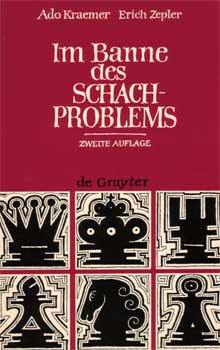<p >When he started to compose chess problems at the age of 14 Erich Zepler was destined to become one of the leaders of the new German school of chess problem composition (also known as the logical school). He mainly composed direct mates with three or more moves. In the 1920’s he started to work on chess problems with Ado Kraemer, another German also born in 1898. This collaboration continued when the Nazis came to power, even though Kraemer became a member of the brown-shirted SA and Zepler had been born a Jew. It was interrupted in 1935 when Zepler moved to England.
>When he started to compose chess problems at the age of 14 Erich Zepler was destined to become one of the leaders of the new German school of chess problem composition (also known as the logical school). He mainly composed direct mates with three or more moves. In the 1920’s he started to work on chess problems with Ado Kraemer, another German also born in 1898. This collaboration continued when the Nazis came to power, even though Kraemer became a member of the brown-shirted SA and Zepler had been born a Jew. It was interrupted in 1935 when Zepler moved to England.
After the Second World War Zepler helped Kraemer to be released from internment by the Allies, and they were then able to resume their work together on chess problems. In 1951 they published some of their best work in the book Im Banne des Schachproblems (Under the Spell of Chess Problems). A revised version of this book was published in 1971. They also published in 1957 their selection of the best chess problems devised by others, in Problemkunst im 20. Jahrhundert (The art of the chess problem in the 20th century).
Eric Zepler played chess for the Hampshire county team. In 1957 he became an International Judge of Chess Competitions, and in 1973 he became an International Master of Chess Composition. He once said that the latter title gave him more pleasure than the honorary Doctor of Science in Engineering degree that he was awarded by Southampton University in 1977.
Besides chess Eric Zepler had many other interests, including literature, music and art. He also enjoyed playing bridge, which he had learned when he was interned in 1940.